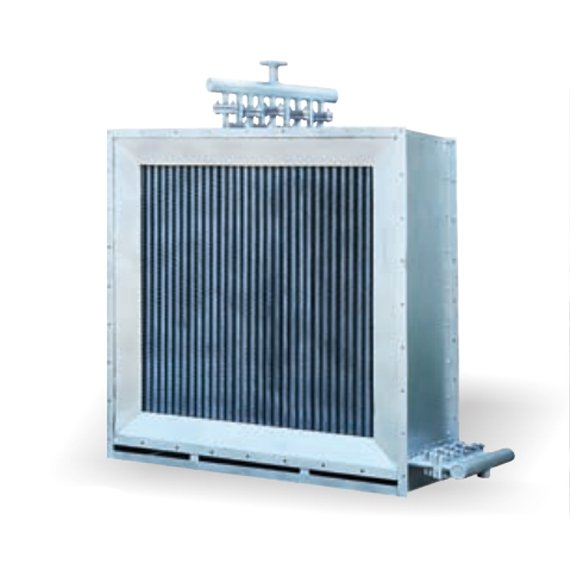We manufacture the steam heat exchanger in different capacity (from 18 tones to 24
tones paddy) to be dried in the drier on per day basis.
Paddy Drier Steam Heat Exchanger
Paddy Drier Steam Heat Exchanger
Specification
-
-
Very comfortable for cleaning all the tubes because of its folding system.
-
Continuous spirally wound finned tube with crimped fins gives high efficiency
than base tubes and more over it is wound with tension which gives 80% more
efficiency. Now a day crimped fins have gained more and more acceptance
and popularity in rice industries. -
Heat exchanger dries the paddy with (302 MS Fin Tubes) different number of tubes
in fixed type and split type mode. In split type all rows can be dismantled and
easily reassembled.
Product Description
Under the stern guidance of our dexterous technocrats, the offered Steam Heat Exchanger is manufactured using the finest quality components. Provided exchanger is widely used in rice paddy parboiling plants for transferring heat for parboiling of rice. This exchanger is available in several specifications for our global clients at economical rates. Moreover, our patrons can get this Steam Heat Exchanger from us in bulk within prescribed delivery time.
Product Details
| Type | Paddy Drier Steam Heat Exchanger |
| Material | PFC FOOD PRO-TECH. |
| Condition | New |
| Color | White |
| Usage | Industrial |
| Size | Different Sizes Available |
| Warranty | 1 Year |
| Voltage | 220-440 Volt (v) |
Components of a Paddy Drier Steam Heat Exchanger
A paddy dryer and steam heat exchanger system is designed to dry raw paddy using steam as the heat source. This setup is commonly found in rice processing plants where efficient drying is crucial to preserve the quality and shelf-life of rice. Here are the main components typically involved in such a system:
-
Paddy Dryer: Batch Dryer or Continuous Flow Dryer: Depending on the scale and design of the plant, paddy dryers can be of different types. Batch dryers handle a fixed quantity of paddy at a time, while continuous flow dryers allow for a continuous drying process. Drying Chamber: Where paddy is exposed to heated air or steam to remove moisture. Air Circulation System: Moves heated air or steam through the drying chamber to evenly dry the paddy.
-
Steam Heat Exchanger: Heat Exchanger Unit: This device transfers heat from steam to another fluid, typically air or water, which is then used in the drying process. Steam Supply System: Provides steam from a boiler or another heat source to the heat exchanger. Condensate Removal System: Ensures efficient removal of condensate (water formed from steam) to maintain steam quality and heat transfer efficiency.
-
Control Systems: Temperature and Moisture Sensors: Monitor and control the temperature and moisture levels within the drying chamber to optimize drying efficiency and quality. Automatic Controls: Adjust airflow, temperature, and other parameters based on real-time data to achieve consistent drying results.
-
Air Handling System: Fans or Blowers: Move air through the drying chamber or heat exchanger to facilitate drying. Ductwork and Ventilation: Distributes heated air efficiently and removes moisture-laden air from the drying process.
-
Insulation and Enclosure: Insulation: Ensures that heat is retained within the drying chamber or heat exchanger system, improving energy efficiency. Enclosures: Provide a controlled environment for the drying process, protecting against external contaminants and weather conditions.
-
Safety and Maintenance Features: Safety Interlocks: Prevents operation under unsafe conditions, such as overheating or excessive pressure. Maintenance Access: Provides easy access for cleaning, inspection, and maintenance of components.
-
Utilities: Water Supply and Drainage: Required for steam generation and condensate removal. Electric Power Supply: Powers motors, controls, and other electrical components.
The efficiency and effectiveness of a paddy dryer and steam heat exchanger system depend on the integration and operation of these components. Proper maintenance and operation are essential to ensure consistent drying results and to maximize the yield and quality of the processed rice.






// contact us //
